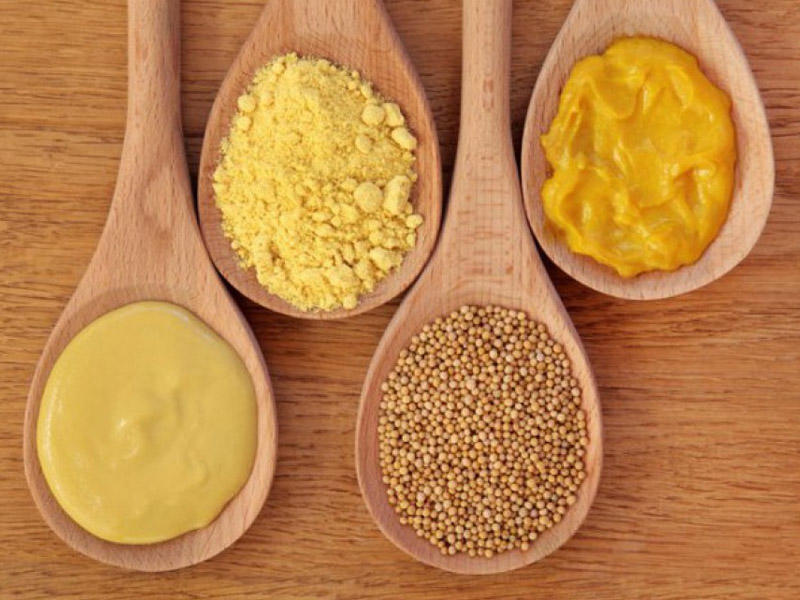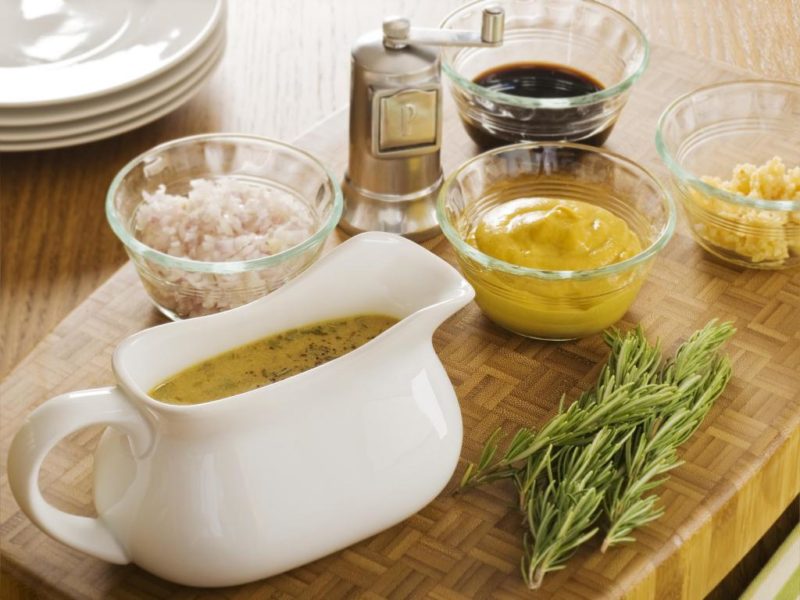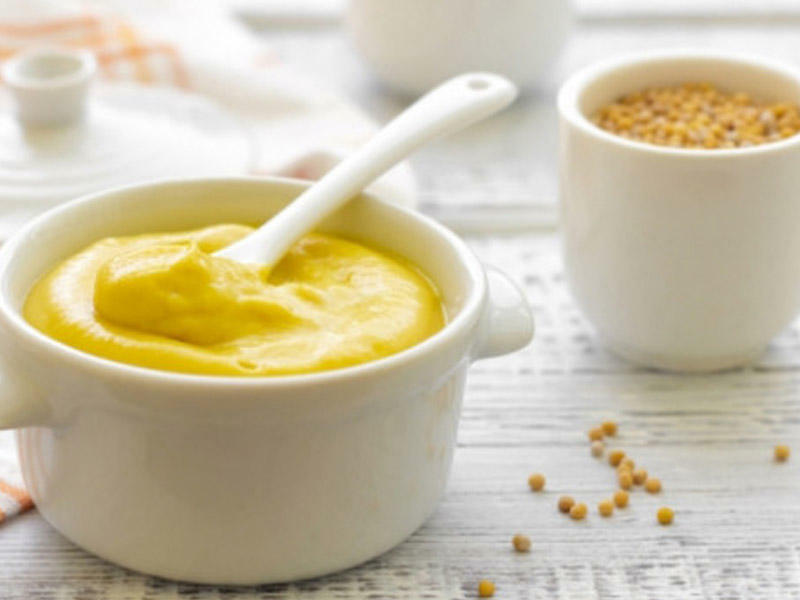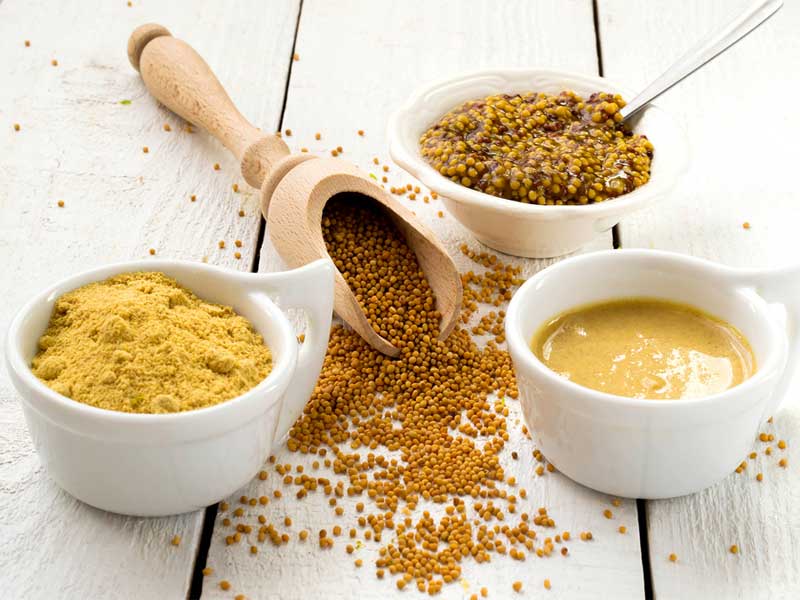Mustard is a versatile and widely used condiment that has been enjoyed by humans for thousands of years. It is made from the seeds of the mustard plant, which belong to the Brassicaceae family.
The mustard plant is native to Europe and is believed to have originated in the Mediterranean region. It is known for its vibrant yellow flowers and pungent aroma. The plant has been cultivated for its seeds, which are used to produce mustard in various forms such as sauces, pastes, and powders.
There are three main types of mustard: yellow mustard, brown mustard, and black mustard. Yellow mustard is made from yellow or white mustard seeds and is milder in flavor. It is commonly used in American-style mustard and is often found in hot dog and hamburger condiments. Brown mustard, also known as Indian or Chinese mustard, is made from brown or black mustard seeds and has a stronger and more pungent flavor. Black mustard, as the name suggests, is made from black mustard seeds and is known for its intense and spicy flavor.
The production process of mustard involves soaking the seeds in water or vinegar to soften them, grinding them into a paste, and adding various other ingredients such as vinegar, salt, and spices to enhance the flavor. The addition of ingredients like turmeric or paprika gives mustard its distinct yellow color.
Mustard is not only a flavorful condiment but also offers a range of health benefits. It is low in calories and contains essential nutrients such as vitamins A, C, and K, as well as minerals like calcium, potassium, and magnesium. Mustard seeds are also a rich source of dietary fiber and contain compounds such as glucosinolates, which have been associated with anti-inflammatory and anti-cancer properties.
In addition to being used as a condiment, mustard has a wide range of culinary applications. It is used in salad dressings, marinades, sauces, and dips. Mustard is a popular ingredient in sandwiches, burgers, and wraps, adding a tangy and flavorful element to these dishes. It is also used in pickling and can be sprinkled over meats and roasted vegetables to enhance their flavor.
Mustard has a long history and cultural significance in various cuisines around the world. In European cuisine, mustard is a common accompaniment to sausages, cold meats, and sandwiches. Dijon mustard, which originated in the city of Dijon in France, is renowned for its smooth and tangy flavor and is considered a gourmet condiment. In Indian cuisine, mustard seeds are often tempered in hot oil to release their aroma and flavor and are commonly used in curries, pickles, and chutneys.

Apart from its culinary uses, mustard has also been used for medicinal purposes. In ancient times, mustard plasters were applied to the body to relieve pain and inflammation. Mustard seeds were believed to have diuretic, stimulant, and aphrodisiac properties. The health benefits of mustard have been recognized in traditional medicine systems such as Ayurveda and traditional Chinese medicine.
Commercially, mustard is produced by both small-scale producers and large companies. The popularity of mustard has led to the production of different varieties and flavors, catering to various tastes and preferences. Many brands offer organic mustard and specialty mustards infused with flavors such as honey, maple syrup, or herbs.
The market for mustard is global, with consumption spread across countries around the world. The United States is one of the largest consumers of mustard, with yellow mustard being a staple in American households. France, known for its Dijon mustard, is also a major consumer and producer. Other notable mustard-consuming countries include Germany, Canada, the United Kingdom, and India.
In recent years, the demand for mustard has continued to grow, driven by factors such as consumer preference for natural and organic products, the popularity of gourmet foods, and the expanding range of culinary options. Mustard has gained attention in the food industry as a versatile and healthy condiment that can be incorporated into a wide range of dishes.
In conclusion, mustard is a condiment that has stood the test of time and continues to be enjoyed by people around the world. From its humble origins as a simple paste made from mustard seeds, it has evolved into a versatile and flavorful ingredient with a rich history and cultural significance. Whether used in traditional recipes, gourmet cuisine, or as a household staple, mustard adds a distinct and tangy flavor to a wide variety of dishes. With its health benefits and culinary versatility, mustard is likely to remain a popular condiment for years to come.The Business of Mustard: A Condiment with Global Appeal
1. Introduction
Mustard, a condiment made from the seeds of the mustard plant, has a long and storied history. In this article, we will explore the business aspects of mustard, including its production, market trends, and the key players in the industry. From small-scale producers to large multinational companies, the mustard business offers a wide range of opportunities.
2. Mustard Production Process

The production process of mustard involves several key steps. First, the mustard seeds are soaked in water or vinegar to soften them. Then, they are ground into a paste, often with the addition of other ingredients such as vinegar, salt, and spices. The paste is then packaged into various forms, including sauces, pastes, and powders. Mustard production requires careful control of factors such as the quality of the seeds, the grinding process, and the consistency of the final product.
3. Market Overview
The mustard market is a global one, with consumption spread across countries around the world. The United States is one of the largest consumers of mustard, with yellow mustard being a staple in American households. France, known for its Dijon mustard, is also a major consumer and producer. Other notable mustard-consuming countries include Germany, Canada, the United Kingdom, and India. The market for mustard is influenced by factors such as consumer preferences, regional tastes, and the availability of different varieties and flavors.
4. Competitive Landscape
The mustard industry is highly competitive, with both small-scale producers and large companies vying for market share. In the United States, prominent companies such as French’s and Heinz dominate the market. These companies offer a wide range of mustard products, including classic yellow mustard, honey mustard, and specialty flavors. In France, iconic brands such as Maille and Amora have a strong presence, particularly in the Dijon market. The industry’s competitive dynamics are shaped by factors such as product quality, brand recognition, pricing, and marketing strategies.
5. Market Trends and Innovations
In recent years, the mustard market has witnessed several notable trends and innovations. One prominent trend is the increasing demand for natural and organic products. Consumers are seeking healthier options and are willing to pay a premium for condiments made from high-quality, organic ingredients. Mustard producers have responded by offering organic mustard varieties and promoting their products as clean and sustainable options. Another trend is the popularity of gourmet and artisanal mustards. Specialty mustards infused with flavors such as honey, maple syrup, or herbs have gained popularity among food enthusiasts and are often featured in high-end restaurants and gourmet food stores.
6. Health Benefits of Mustard

Mustard not only adds flavor to dishes but also offers a range of health benefits. It is low in calories and contains essential nutrients such as vitamins A, C, and K, as well as minerals like calcium, potassium, and magnesium. Mustard seeds are also a rich source of dietary fiber and contain compounds such as glucosinolates, which have been associated with anti-inflammatory and anti-cancer properties. The increasing focus on health and wellness has led to the promotion of mustard as a healthier alternative to other condiments.
7. Mustard in Culinary Applications
Mustard has a wide range of culinary applications and is used in various cuisines around the world. In European cuisine, mustard is a common accompaniment to sausages, cold meats, and sandwiches. Dijon mustard, with its smooth and tangy flavor, is often used in vinaigrettes and marinades. In Indian cuisine, mustard seeds are a staple ingredient, used in tempering and adding flavor to curries, pickles, and chutneys. Mustard is also used in pickling and can be sprinkled over meats and roasted vegetables to enhance their flavor. The versatility of mustard is a key factor contributing to its popularity.
8. Export Opportunities
The global demand for mustard presents lucrative export opportunities for mustard-producing countries. For countries with a strong mustard industry, exporting mustard and mustard products can be a profitable venture. These exports can cater to global markets, particularly in regions where mustard is not traditionally grown or produced. However, exporting mustard requires careful consideration of factors such as import regulations, market demand, and shipping logistics. Developing strong relationships with distributors and exploring niche markets can be key strategies for successful mustard exports.
9. Challenges and Future Outlook
The mustard industry, like any other industry, faces its fair share of challenges. These include fluctuations in raw material prices, changing consumer preferences, and intense competition. Additionally, maintaining consistent quality and meeting regulatory requirements can be challenging for small-scale producers. Looking ahead, the outlook for the mustard industry remains positive. With its long history, versatility, and health benefits, mustard is likely to continue to be a popular condiment choice for consumers. Producers who adapt to new trends, invest in innovation, and differentiate themselves through quality and branding will be well-positioned for success.
10. Conclusion

Mustard, a condiment made from the seeds of the mustard plant, has a rich history and global appeal. The business of mustard offers a range of opportunities, from small-scale producers to large multinational companies. The industry is competitive and dynamic, influenced by market trends, consumer preferences, and innovations. Mustard has a diverse range of culinary applications and is used in various cuisines around the world. Its health benefits and versatility make it a popular choice for consumers seeking flavorful and healthier condiments. As the mustard industry continues to evolve, producers who innovate, adapt, and meet changing consumer demands will thrive in this thriving condiment market.









